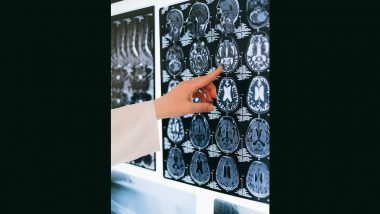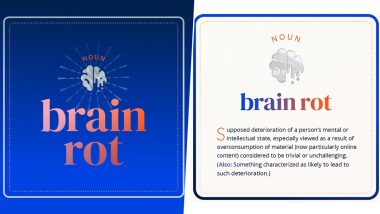Massachusetts, September 24: Patients with fibromyalgia (FM), a condition that mostly affects women and is marked by chronic pain, tiredness, and brain fog, usually have limited access to treatment options and explanations for their symptoms. Scientists Recreate Neurons That Allow Mice to Walk Again After Injury.
Cognitive behavioural therapy (CBT), according to researchers at Mass General Brigham, can significantly lessen the burden of FM by, among other things, reducing pain-catastrophizing, a detrimental cognitive and emotional response that can exacerbate pain by way of helplessness, rumination, and intrusive thoughts. Neuroimaging research that demonstrates a decline in connection between brain regions associated with self-awareness, pain, and emotional processing lends support to this conclusion. The findings of the study were published in Arthritis & Rheumatology.
“In this study, we looked at the interplay between psychological processes and the brain's connectivity patterns in response to pain,” said co-senior author Robert Edwards, PhD, a clinical psychologist in the Department of Anesthesiology, Perioperative & Pain Medicine at Brigham and Women’s Hospital, a founding member of the Mass General Brigham healthcare system. “We wanted to explore how CBT, a talk therapy aimed at combatting maladaptive thoughts, can enhance individuals’ daily functioning and alter the brain’s processing of pain-related information.” Patients With Psoriasis Have Lower Coronary Flow, Reveals Study.
Edwards explains that CBT can reduce negative cognitive and emotional responses to pain. He says that while these responses are normal, they can amplify the disabling effects of chronic pain, and make conditions like FM more burdensome.
The research team for the study included researchers from three Mass General Brigham members: Spaulding Rehabilitation Hospital, Brigham and Women’s Hospital and Massachusetts General Hospital. Mass General Brigham brings together 16 member institutions, including academic medical centers, top-tier specialty hospitals, community hospitals and more. Research that spans more than one of these entities is more than the sum of its parts, helping to provide insights and unique perspectives from multiple settings and areas of expertise.
Researchers recruited 98 women, randomly assigning 64 to a treatment group receiving CBT and 34 to a control group that received education about FM and chronic pain but was not taught specific CBT techniques. All participants were between 18 and 75 years old and had a confirmed FM diagnosis for at least six months. To collect baseline data, all participants completed several validated pain and quality of life questionnaires.
Each group participated in eight intervention sessions, consisting of 60–75-minute visits with a licensed mental health provider. Participants were primarily assessed for their levels of pain interference, or a measure of how much their pain disrupted their daily activities, pain catastrophizing, pain severity and the overall impact FM had on patients’ quality of life.
Results demonstrated that those who underwent CBT experienced significantly greater reductions in pain interference. CBT participants also exhibited significantly less pain catastrophizing and reported that their FM symptoms had significantly less impact on their daily lives.
The team saw evidence that after undergoing CBT, patients experienced changes in the activities of all three networks that suggested a diminished focus on pain.
“Prior to participants undergoing CBT, we saw that certain parts of the brain linked to self-awareness and sensation were very connected, suggesting patients were pertinently aware of the pain sensation they were experiencing and internalized these symptoms,” said co-first author Jeungchan Lee, PhD, an instructor in the Department of Physical Medicine and Rehabilitation based at Spaulding Rehabilitation Hospital and the Athinoula A. Martinos Center for Biomedical Imaging at Massachusetts General Hospital. “After CBT, these connections were significantly less strong, suggesting that patients were better at separating themselves from their pain after therapy.”
This study was limited to women, partly because of its high prevalence, and partly to eliminate confounding gender differences in brain activity. In the future, the researchers hope to collect data from men and non-binary patients with FM. Additionally, CBT includes several therapeutic components, and these results cannot be generalized to assess the impact across all forms of CBT on reducing FM chronic pain.
Both Lee and Edwards agree that these findings ultimately suggest that complex chronic pain conditions like fibromyalgia should be addressed with a multitude of pharmacological and cognitive therapies.
“I hope that these findings motivate healthcare providers to consider CBT as an effective treatment option to reduce the impact of pain patients experience,” explained Edwards.
(This is an unedited and auto-generated story from Syndicated News feed, LatestLY Staff may not have modified or edited the content body)













 Quickly
Quickly




















